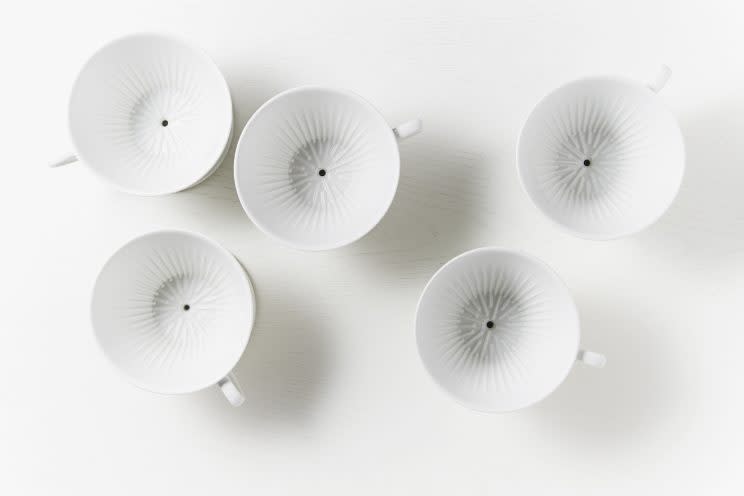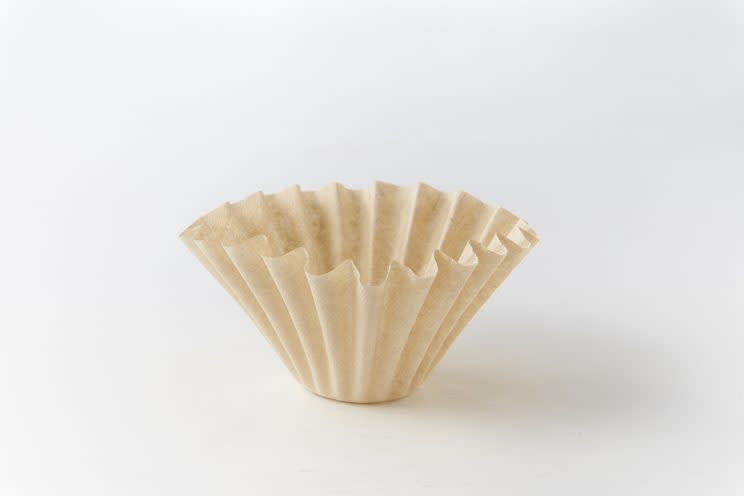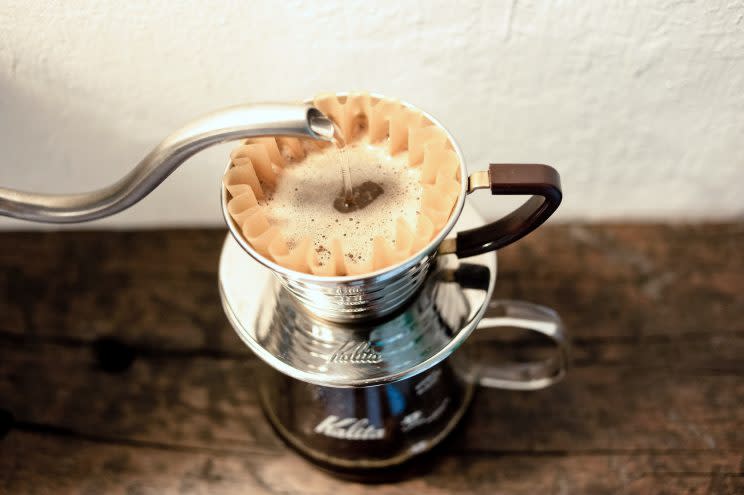How rising coffee startup Blue Bottle reinvented an ancient tool

Over the past decade, the cream of the coffee industry has steadfastly resisted modern technology. Instead of an arms race of modern machinery between coffee companies, the quest for the perfect cup has been dominated by the decidedly vintage technology: a dripper, a kettle, and a pair of hands.
At San Francisco-based Blue Bottle, the most dominant company of coffee’s “third wave,” a trend that reframes coffee in an artisanal vein like wine, this has meant eschewing coffee machines entirely when it comes to its non-espresso coffee. In its 30-odd cafés in six cities, there is no big tap—each cup is made one at a time, in front of you. For now, at least, machines are no match for people when it comes to brewing coffee.
“There’s a belief that we’re just doing pour over because we want you to wait longer,” says Michael Phillips, Blue Bottle’s director of training. “We think we can make superior product by applying our intelligence and skills.”
With so much focus on skill, it’s unusual to see big developments in equipment, with most cafes relying on tried-and true equipment from companies like Bonmac, Hario, and Kalita. But as of Dec. 5, Blue Bottle is debuting something new: a $25 porcelain coffee dripper, a product of 70 prototypes to be used by its baristas and sold to customers for home use.

“There’s a lot of amazing brewers out there, and in the right capable cafes you can make great coffee with near all of them,” says Phillips. “What it comes down to is consistency and ease of use.”
The problem with the classic coffee dripper that use No. 2 filters, Phillips says, is that the wedge or conical designs require more skill to direct the water to the right places—which the company’s burgeoning market of home brewers may not have mastered, though Blue Bottle’s baristas, who use this system, have.
Thanks to $120 million of funding, something which other smaller coffee roasters and cafés do not have, Blue Bottle went all in with R & D. Assembling a team of experts that included MIT engineers, fluid dynamics experts, and origami artists, Blue Bottle researched different dripper designs, testing them on a pouring rig that provided myriad data points. After 70 prototypes, the team had a new dripper that gave them excellent results, consistently.

For most people, the new dripper evokes diner coffee makers with a flat-bottomed basket with wavy sides—a classic design that favors an even bed of coffee grounds. But for coffee nerds, Blue Bottle’s design looks awfully familiar—like the Japanese Kalita Wave, which many experts regard as the best coffee dripper. This Kalita/Blue Bottle flat-bottomed design makes the bed of coffee grounds an even depth and creates a column of water on top of it that promotes even extraction. As long as the user pours gently and evenly so as to not agitate the coffee grounds, the dripper should yield good results given the right coffee-to-water ratio, grind, and temperature.

“It has a Kalita Wave-like structure to it, but all of us are ripping off basket coffee brewers that have been on our parents counters for decades,” says Phillips.
Side by side with the Kalita 185, the two look near-identical—as do their unbleached filters. At a glance, the only variance seems to be Blue Bottle’s single 4-millimeter hole versus the three smaller holes in the Kalita. But there’s more than meets the eye. According to Phillips, most of the research dealt with the easy-to-overlook ridges on the bottom, as their height, in tandem with the size and shape of the hole, manipulate the flow rates and coffee’s extraction and, above all, consistency.
Extreme coffee geeking like this can seem a bit over the top, especially considering how many people view coffee in a purely commoditized utilitarian fashion, like air, sleep, or calories. But by improving ease of use and consistency, things that help people who aren’t baristas the most, Blue Bottle is putting higher quality everyday coffee within reach—because $4 coffees in-store just aren’t sustainable.
Ethan Wolff-Mann is a writer at Yahoo Finance focusing on consumerism, tech, and personal finance. Follow him on Twitter @ewolffmann.
Read more:
This loophole lets you give 5% of Amazon purchases to charity—for free
The most efficient way to give to charity
How to get a debt collector to pay you
Trump TV quietly made its first broadcast
Yellen: Repealing Dodd-Frank would increase the chances of another financial crisis